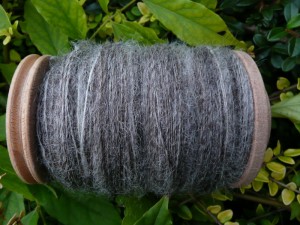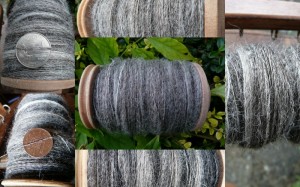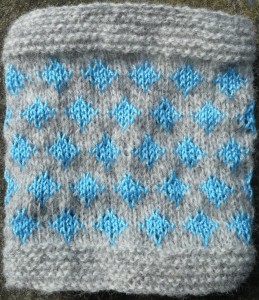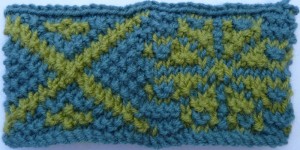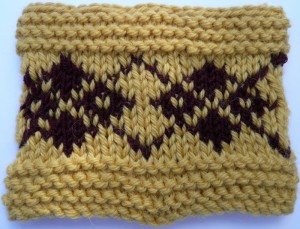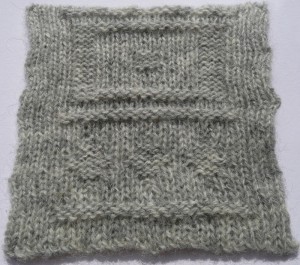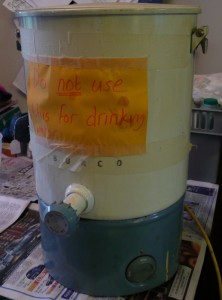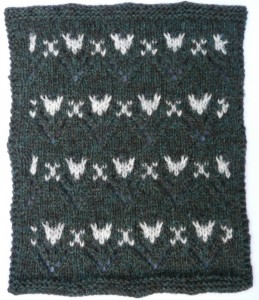The cyclists did their biggest climb so far this tour, into Andorra, and I have crested my own little summit with my spinning.
I have finished my first full bobbin of the tour. Yes, the grey Dorset is finally finished! Only two bobbins of the white to go and then I can ply it and see what it will be like as yarn.
In honour of the occaision I have been playing at making mosaics with Picasa 3. So here is a recap of my progress on this yarn on the tour.
And another, because if a thing is worth doing, it is worth overdoing.
I ran my foot over with our side gate shortly after taking these photos while having a quick tidy up outside. It is a nice substantial gate. I am hopping around now (well not right now, since even with the laptop I can’t type and hop at the same time). I shall go and bathe it and anoint it in a minute.
I have been managing to do a spot of knitting in between all the spinning. I have finally finished my latest test sample for my current City and Guilds project. I was test driving how the colours work, and also testing 6 possible patterns, of which I will probably use 3. This is the project I have been dyeing all the colours for.
This is it in its unblocked, straight off the needles state.
These are the most likely 3 patterns.
And these are the three probably rejects.
As you can see the edging at the bottom edge is too loose. I think the top edge is better but now probably a bit tight. I am reserving final judgement until after it has been washed. The top edging is worked on smaller needles, which I think works well, but I think I decreased too many stitches.
I also think I need to introduce another couple of intermediate colours. Another medium orange about half way up to ease the transition from red to orange, and a very pale orange just before the yellow. It is coming along though, and I am looking forward to being able to measure the tension after it has been washed and start plotting out the final design.
